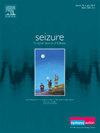Pregnancy planning in women with epilepsy: A single center observational study with focus on epilepsy type
IF 2.7
3区 医学
Q2 CLINICAL NEUROLOGY
引用次数: 0
Abstract
Purpose
To explore various aspects of pregnancy planning in women with epilepsy and to identify factors needing particular attention in the counselling of these patients with focus on epilepsy type.
Methods
285 pregnancies in 192 women were collected from the EURAP registry in Trondheim, Norway. Medical records were reviewed to validate diagnoses and types of epilepsy according to revised ILAE classifications.
Results
Ten women proved to have non-epileptic conditions, leaving 274 pregnancies in 182 patients for inclusion. In 40 %, the epilepsy was focal, in 45 % generalized, including 18 % with JME. In 14 %, the epilepsy type was unknown. Pregnancies were planned in 64 %; 16 % were unintended and 20 % undetermined. Unintended pregnancies occurred in 15 % with focal and in 17 % with generalized epilepsy and in only 10 % of the JME subgroup. Planned pregnancy was associated with both preconception folic acid intake (p < 0.001) and breastfeeding ≥6 months (p = 0.011). Epilepsy of unknown type had the lowest rates of intended pregnancy and folic acid use.
Conclusion
We found no difference in pregnancy planning between focal and generalized epilepsy. Intended pregnancy was strongly associated with both folic acid and breastfeeding. The JME subgroup did not perform worse but rather above average regarding family planning and breastfeeding. The lowest proportion of folic acid intake was found in epilepsy of unknown type in which seizure control is common, and patients may receive less attention from the specialist health service. Appropriate counselling regarding pregnancy should reach out to all fertile women regardless of epilepsy type and seizure control.
癫痫妇女的怀孕计划:以癫痫类型为重点的单中心观察研究。
目的:探讨癫痫妇女怀孕计划的各个方面,并确定在为这些患者提供咨询时需要特别注意的因素,重点是癫痫类型。方法:从挪威特隆赫姆的EURAP登记处收集了192名妇女的285例妊娠。方法:从挪威特隆赫姆的EURAP登记处收集了192名妇女的285份妊娠资料,并根据修订后的ILAE分类对医疗记录进行了审查,以验证诊断结果和癫痫类型:结果:10 名妇女被证明患有非癫痫性疾病,因此有 182 名患者的 274 例妊娠被纳入研究范围。其中 40% 患有局灶性癫痫,45% 患有全身性癫痫,包括 18% 患有 JME。14%的患者癫痫类型不明。64%的患者是计划怀孕,16%是意外怀孕,20%是未确定怀孕。15%的局灶性癫痫患者和17%的全身性癫痫患者意外怀孕,只有10%的JME亚组患者意外怀孕。计划怀孕与孕前叶酸摄入量(p < 0.001)和母乳喂养≥6 个月(p = 0.011)有关。未知类型癫痫的计划怀孕率和叶酸使用率最低:结论:我们发现局灶性癫痫和全身性癫痫的妊娠计划没有差异。打算怀孕与叶酸和母乳喂养密切相关。JME亚组在计划生育和母乳喂养方面的表现并不差,反而高于平均水平。叶酸摄入比例最低的是类型不明的癫痫,这种癫痫的发作控制很常见,患者可能较少得到专科医疗服务的关注。无论癫痫类型和发作控制情况如何,都应向所有育龄妇女提供适当的怀孕咨询。
本文章由计算机程序翻译,如有差异,请以英文原文为准。
求助全文
约1分钟内获得全文
求助全文
来源期刊

Seizure-European Journal of Epilepsy
医学-临床神经学
CiteScore
5.60
自引率
6.70%
发文量
231
审稿时长
34 days
期刊介绍:
Seizure - European Journal of Epilepsy is an international journal owned by Epilepsy Action (the largest member led epilepsy organisation in the UK). It provides a forum for papers on all topics related to epilepsy and seizure disorders.
 求助内容:
求助内容: 应助结果提醒方式:
应助结果提醒方式:


